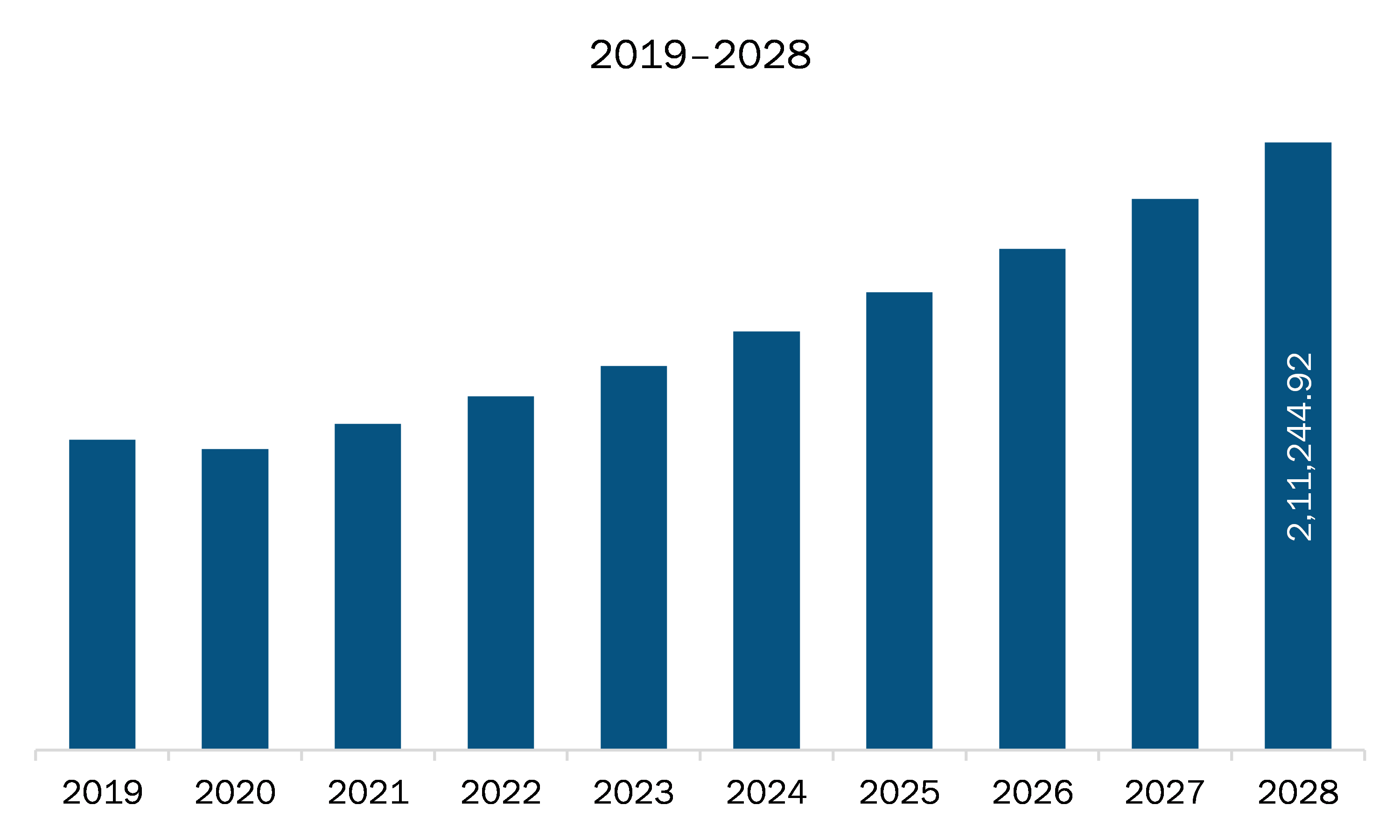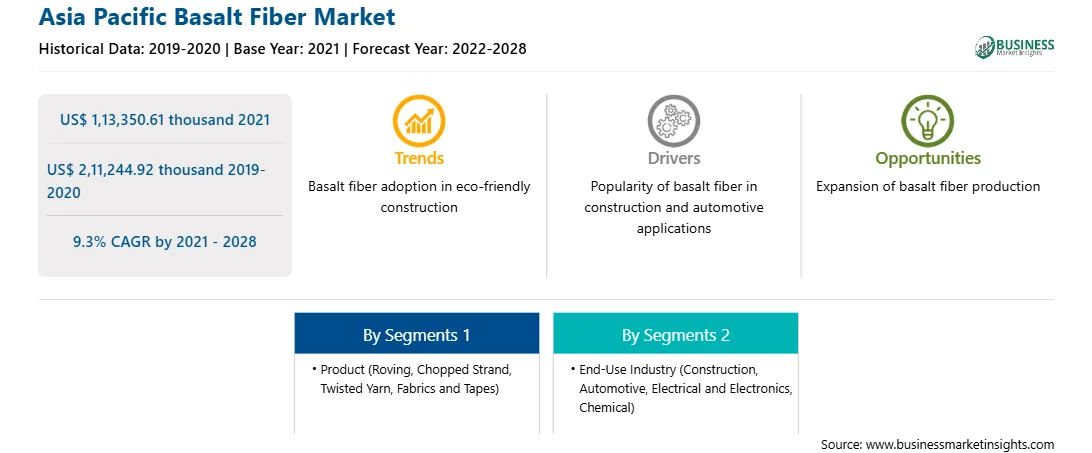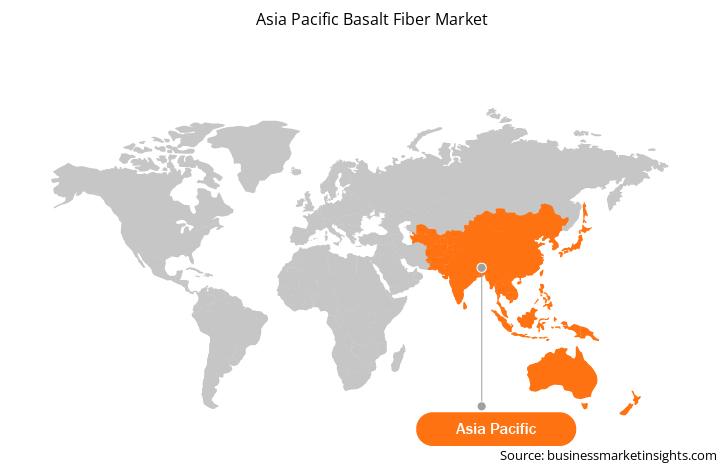APAC comprises several economies such as India, China, Japan, South Korea, and Australia. These countries are witnessing an upsurge in industrialization and urbanization activities, offering ample opportunities for the key market players in the basalt fiber market. In APAC, there has been an increase in the consumption of basalt fiber in various industries, such as wind energy, construction & infrastructure, electrical & electronics, and automotive. Along with this, the rise in awareness regarding sustainable living and environment-friendly materials used in the application of infrastructure, aerospace, and other industries boosts the demand for basalt fibers in the region. Features of basalt fiber such as low cost, easy availability, and increasing production capacities bolster the growth of the basalt fiber market in APAC. Basalt fiber manufacturers in China are developing new basalt fiber manufacturing technologies that focus on manufacturing low-cost continuous basalt fiber. The transportation and electrical & electronics sectors in China are also the major consumers of basalt fiber. Along with this, in this region, China has a large manufacturing capacity of basalt fiber, which can cater to any sudden increase in demand. Therefore, the market growth in the region is also attributed to the increased industrial development in China. Greater mechanical, chemical, and thermal properties of basalt fibers and extensive applications of basalt fibers in various end-use industries are the major factor driving the growth of the APAC basalt fiber market.
The Asian economies have been hit hard due to the pandemic. The emergence of new COVID-19 waves in India, Thailand, and other Asian economies has prolonged the effect of pandemic upon GDP. The ongoing COVID-19 pandemic is anticipated to cause huge disruptions in the growth of various industries in Asia Pacific. However, the uncertainty regarding the future outbreak, especially in countries such as India and a few other Asian countries, has altered the status of several industrial sectors. The governments of various Asia Pacific economies are taking possible steps to restrict the spread of the virus by announcing a country-wide lockdown, which directly impacts the growth of industrial sectors. This factor may impact the demand for basalt fibers. However, the market is expected to witness an increase in investment by players to tap the prevailing opportunities and cater to expanding demand for basalt fibers in post-pandemic times.

Strategic insights for the Asia Pacific Basalt Fiber provides data-driven analysis of the industry landscape, including current trends, key players, and regional nuances. These insights offer actionable recommendations, enabling readers to differentiate themselves from competitors by identifying untapped segments or developing unique value propositions. Leveraging data analytics, these insights help industry players anticipate the market shifts, whether investors, manufacturers, or other stakeholders. A future-oriented perspective is essential, helping stakeholders anticipate market shifts and position themselves for long-term success in this dynamic region. Ultimately, effective strategic insights empower readers to make informed decisions that drive profitability and achieve their business objectives within the market.

| Report Attribute | Details |
|---|---|
| Market size in 2021 | US$ 1,13,350.61 thousand |
| Market Size by 2028 | US$ 2,11,244.92 thousand |
| Global CAGR (2021 - 2028) | 9.3% |
| Historical Data | 2019-2020 |
| Forecast period | 2022-2028 |
| Segments Covered |
By Product
|
| Regions and Countries Covered | Asia-Pacific
|
| Market leaders and key company profiles |
The geographic scope of the Asia Pacific Basalt Fiber refers to the specific areas in which a business operates and competes. Understanding local distinctions, such as diverse consumer preferences (e.g., demand for specific plug types or battery backup durations), varying economic conditions, and regulatory environments, is crucial for tailoring strategies to specific markets. Businesses can expand their reach by identifying underserved areas or adapting their offerings to meet local demands. A clear market focus allows for more effective resource allocation, targeted marketing campaigns, and better positioning against local competitors, ultimately driving growth in those targeted areas.

The APAC basalt fiber market is expected to grow from US$ 1,13,350.61 thousand in 2021 to US$ 2,11,244.92 thousand by 2028; it is estimated to grow at a CAGR of 9.3% from 2021 to 2028. Surging demand for noncorrosive materials is expected to fuel the APAC basalt fiber market growth. The demand for non-corrosive materials is increasing from the construction industry as non-corrosive materials helps to increase the life of structure and to reduce the cost. The corrosion problems are a serious issue in building and construction industry. Basalt fibers have corrosion resistance properties. Due to non-corrosive properties, the demand for basalt fibers is growing from building and construction segment. Basalt fibers are resistant to the action of salt ions, chemicals, and the alkalinity. Resistance to alkaline, acidic, and salt attack makes basalt fiber a good candidate for various construction activities. The basalt fiber is a good choice for reinforcing concrete structure exposed to de-icing salts and marine environment, such as seawalls and other structures located near a waterfront. Thus, corrosion resistance properties of basalt fibers further escalate the demand and contribute to the APAC market growth.
In terms of product, the roving segment accounted for the largest share of the APAC basalt fiber market in 2020. In terms of end-use industry, the construction segment held a larger market share of the APAC basalt fiber market in 2020.
A few major primary and secondary sources referred to for preparing this report on the APAC basalt fiber market are company websites, annual reports, financial reports, national government documents, and statistical database, among others. Major companies listed in the report are Hg Gbf Basalt Fiber Co., Ltd; Hydro Design Management Co. Pvt. Ltd.; Kamenny Vek Company; Shanxi Basalt Fiber Technology Co. Ltd; and Technobasalt-Invest LLC.
The Asia Pacific Basalt Fiber Market is valued at US$ 1,13,350.61 thousand in 2021, it is projected to reach US$ 2,11,244.92 thousand by 2028.
As per our report Asia Pacific Basalt Fiber Market, the market size is valued at US$ 1,13,350.61 thousand in 2021, projecting it to reach US$ 2,11,244.92 thousand by 2028. This translates to a CAGR of approximately 9.3% during the forecast period.
The Asia Pacific Basalt Fiber Market report typically cover these key segments-
The historic period, base year, and forecast period can vary slightly depending on the specific market research report. However, for the Asia Pacific Basalt Fiber Market report:
The Asia Pacific Basalt Fiber Market is populated by several key players, each contributing to its growth and innovation. Some of the major players include:
The Asia Pacific Basalt Fiber Market report is valuable for diverse stakeholders, including:
Essentially, anyone involved in or considering involvement in the Asia Pacific Basalt Fiber Market value chain can benefit from the information contained in a comprehensive market report.